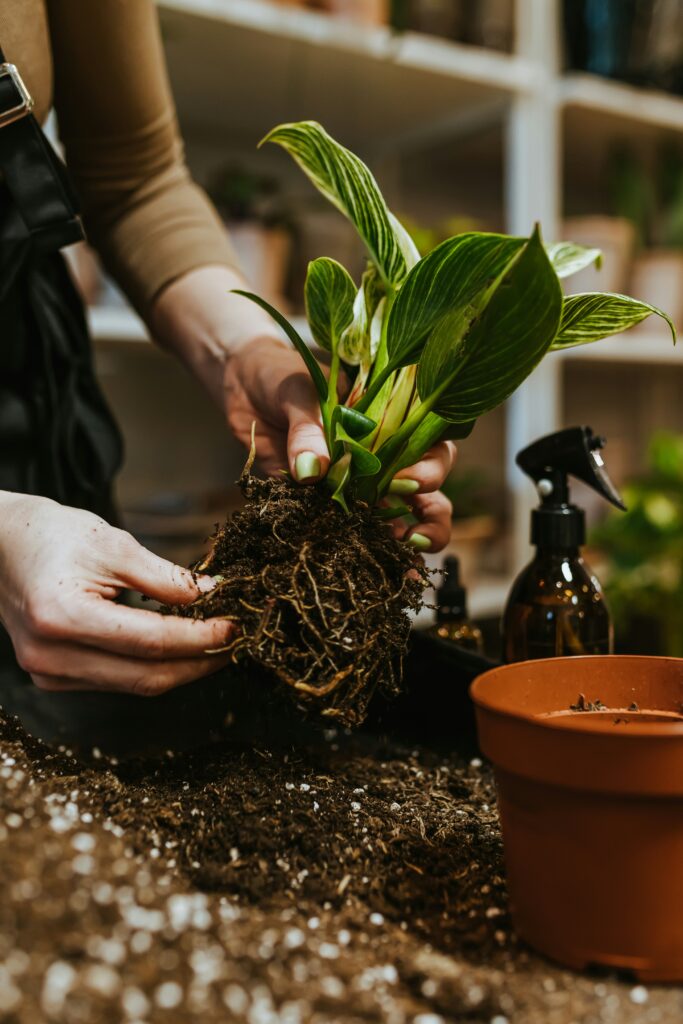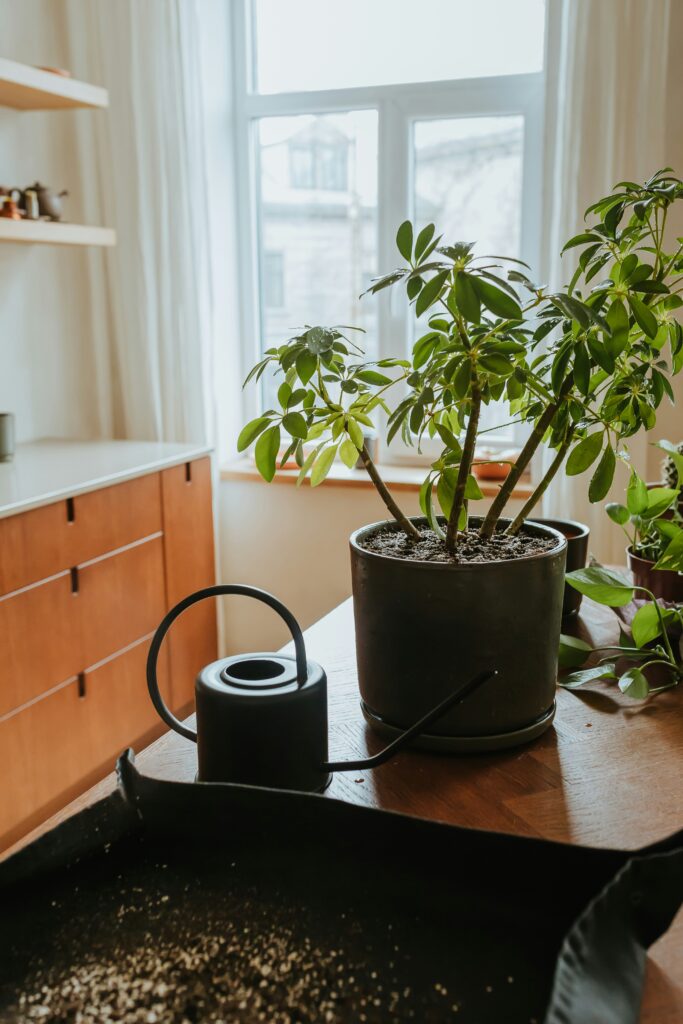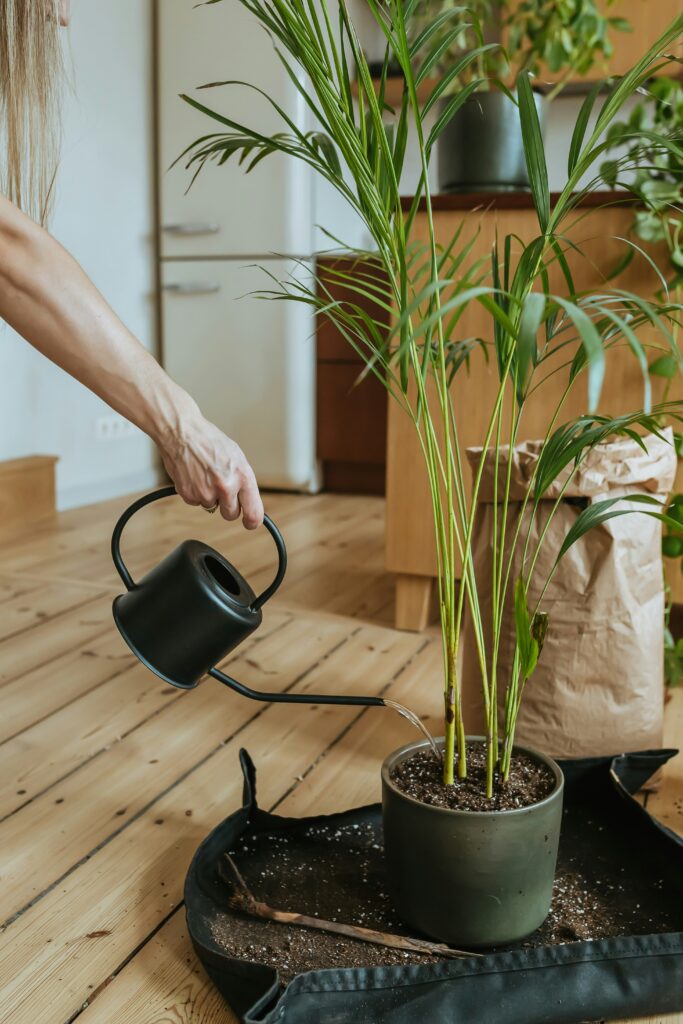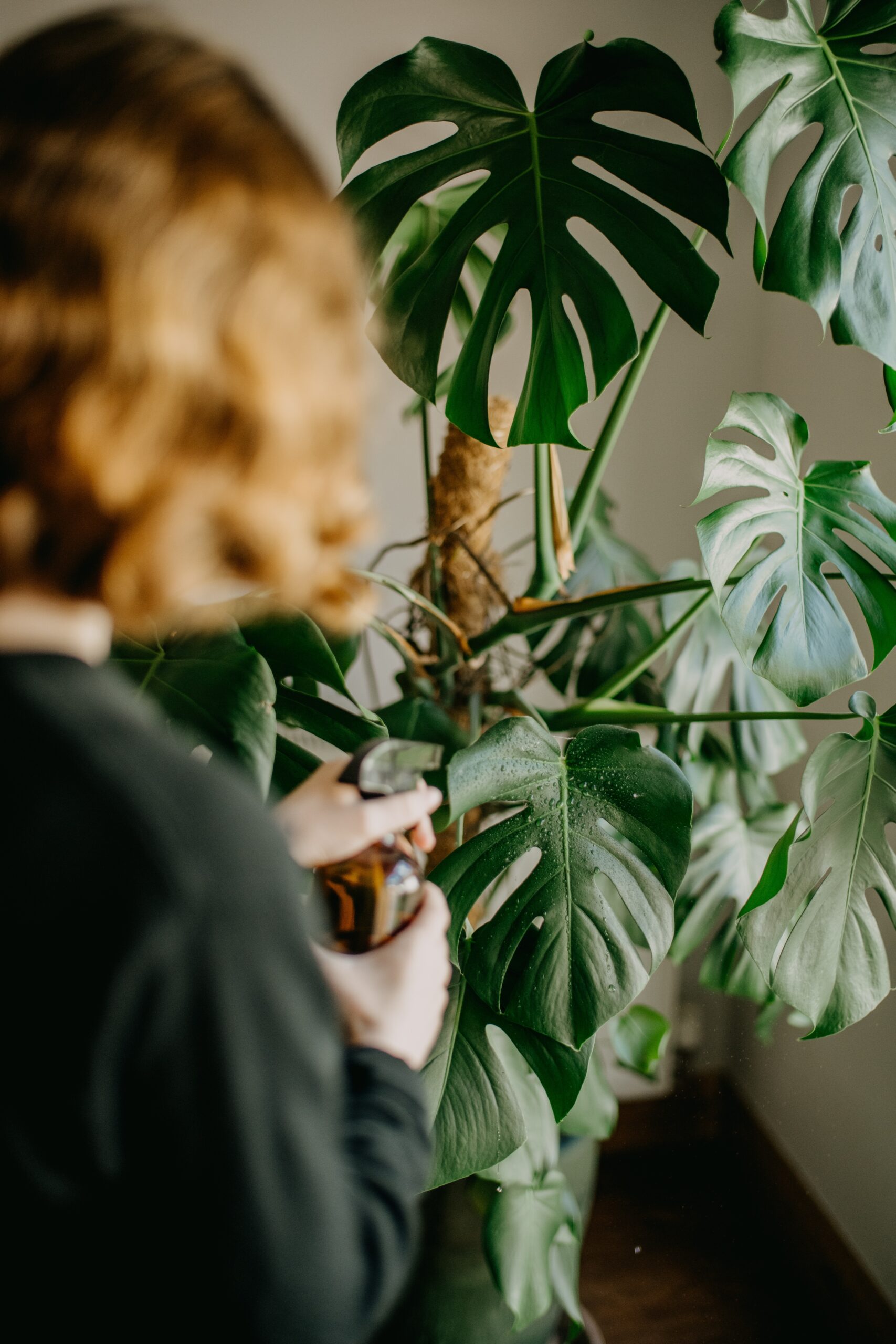With this purpose in mind, here we review houseplant care that goes beyond the basics plus some problem-solving for common issues that you may eventually face.
Advanced Houseplant Care
Overall Appearance
This is all encompassing for paying attention to how a plant actually looks. All plants should be assessed on a weekly basis, and if needed given a light “grooming”. Start with a wipe down to clear any dust off the foliage. You can use a soft, damp cloth for best results. Next, review to make sure that there are no dried or dead foliage/flowers. Eventually, all dead portions will fall off the plant themselves, however, it’s helpful for your houseplant if you help them along before then.
Repotting
Surprisingly, we recommend your first repot to be directly after bringing home a plant. This is because nurseries tend to use soils that are excellent in greenhouse conditions but not for residential homes. With your first repot, you can adjust your soils, check on the root bulb, upgrade the size of your pot if needed and help remove any pests that may be lurking in the nursery soil. This is a preventative measure as leaving nursery soil can cause issues with root rot, browning or yellowing leaves and even fertilizer burns.
Once established, however, repotting is required less frequently. What’s important to note however, is repotting is not a one-size-fits all exercise. Literally, some plants actually do fine when the roots are snuggly, while others require more frequent repotting until they reach maturity. It’s best to research your specific plant to determine how they handle their root balls/repotting.
Julie’s Notes: Commonly, we look for top-heavy plants, roots poking out of the drainage holes, plants popping up and out of their containers and stunted growth as indicators that a repotting may be necessary. If you can help it, always repot at the end of the winter/very early in the Spring.
Fertilizing
Do plants really need fertilizer? Eventually, yes. Unlike plants in the ground, the soil in a pot is in a finite space. The resources do eventually get depleted. But, it’s important to think of fertilizing as a snack not a meal. Used sparingly in houseplant care, specifically in the late winter/early Spring to top off and provide that extra growing boost. A good rule of thumb is to only fertilize when your plants are actively growing or else you can cause more problems than solutions. Some plants are heavier feeders, while others are likely fine without yearly fertilizer. Similar to repotting, be sure to research your particular species of plant.
Common Issues
Leaves
Yellowing Leaves – Too much sunlight or watering issues. First try moving your plants to a new location that sees less sun. Next, stick your finger into your soil to the second knuckle. If dry, underwatering may be the culprit. If sopping wet, over watering. Adjust accordingly.
Browning Leaves – Particularly in succulents, any kind of browning is often related to sunburn. Herbaceous plants as well, any accompaniment of crispy leaves can likely be traced to too much direct or hot sun. Like with yellowing leaves, change locations. Next, check water levels in soil, in this case if browning is crispy, underwatering, but if mushy, overwatering.
Dropping Leaves – Stress! Often times related to a new environment. Good houseplant care includes catching yellow/browning leaf symptoms before they drop. Overwatering is generally a huge culprit here. If you let your plant dry out and there are no improvements, consider a re-pot and the possibility of root rot (see below).
Wilting Leaves – If the wilt resembles a fading, or slouching, check the soil with your finger as stated above. Likely, it will be dry! Provide your plant with a long and deep watering. Foliage, leaves and flowers will perk up within 24-hours if underwatered. If accompanied with browning/yellowing leaves, overwatering may be at play. You’ll feel it in the soil. Double check the drainage and consider a re-pot and the possibility of root rot (see below).
Plants/Roots
Tall, Spindly Plants – Stretching out like they’re reaching for the stars? Absence of the appropriate light. Re-think and adjust the location of your potted friend (we see this often with seedlings we start indoors, if not under a grow-light).
Root rot – Likely, the most dreaded issue any horticultural enthusiast will run into. Root rot means that your roots are literally rotting. This is because they become too waterlogged, similar to drowning, they no longer can pull nutrients from the soil and the water removes the oxygen. And in the absence of oxygen, opportunistic fungi and bacteria can thrive, eating away at your plant, and therefore, in many cases killing it.
If you suspect overwatering is causing your plant severe distress, remove the plant from it’s pot. It will more than likely be soaked and stagnant. Remove all the soil, and using clean sharp scissors or a good paring knife, cut away all sick and rotting roots. Finally, repot in clean soil, and reassess your watering routines. You can save a plant from root rot if you act quickly and decisively.

Finally, there’s nothing like experience when it comes to houseplant care. Over the years you’ll start to get a good feel of what could be going wrong and why. Pivoting in plant care is something impactful for us too, a reminder that we should be open to change as needed. Looking to add a few houseplants to your home this season? Liven up your spaces with some of our favourite Cyber Lime coloured plants. For more reading on all things home, gardening and lifestyle, check out the The Wild Blog. P.s., we’d love to connect, if you don’t already, be sure to follow us on Instagram and Pinterest!





